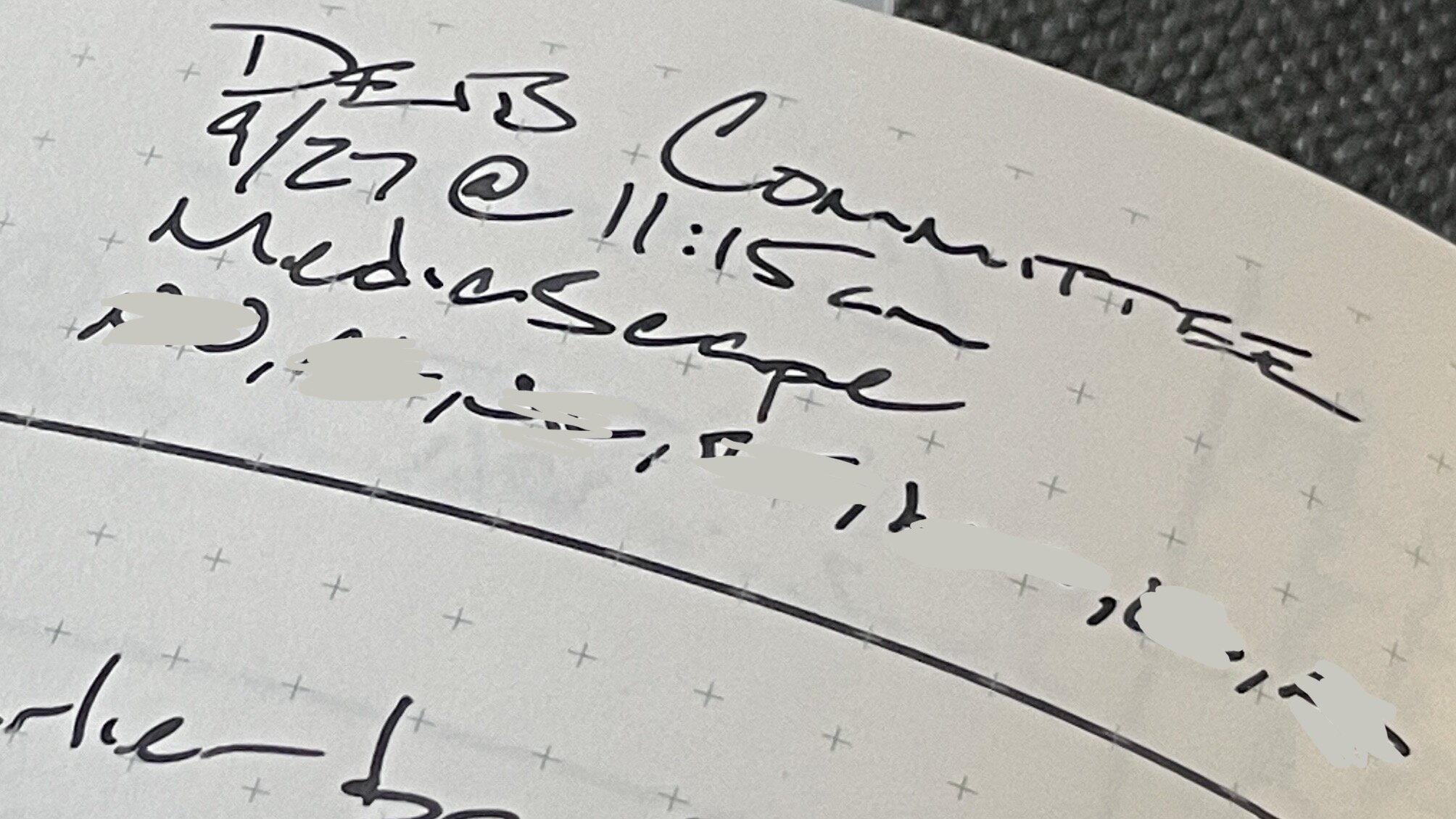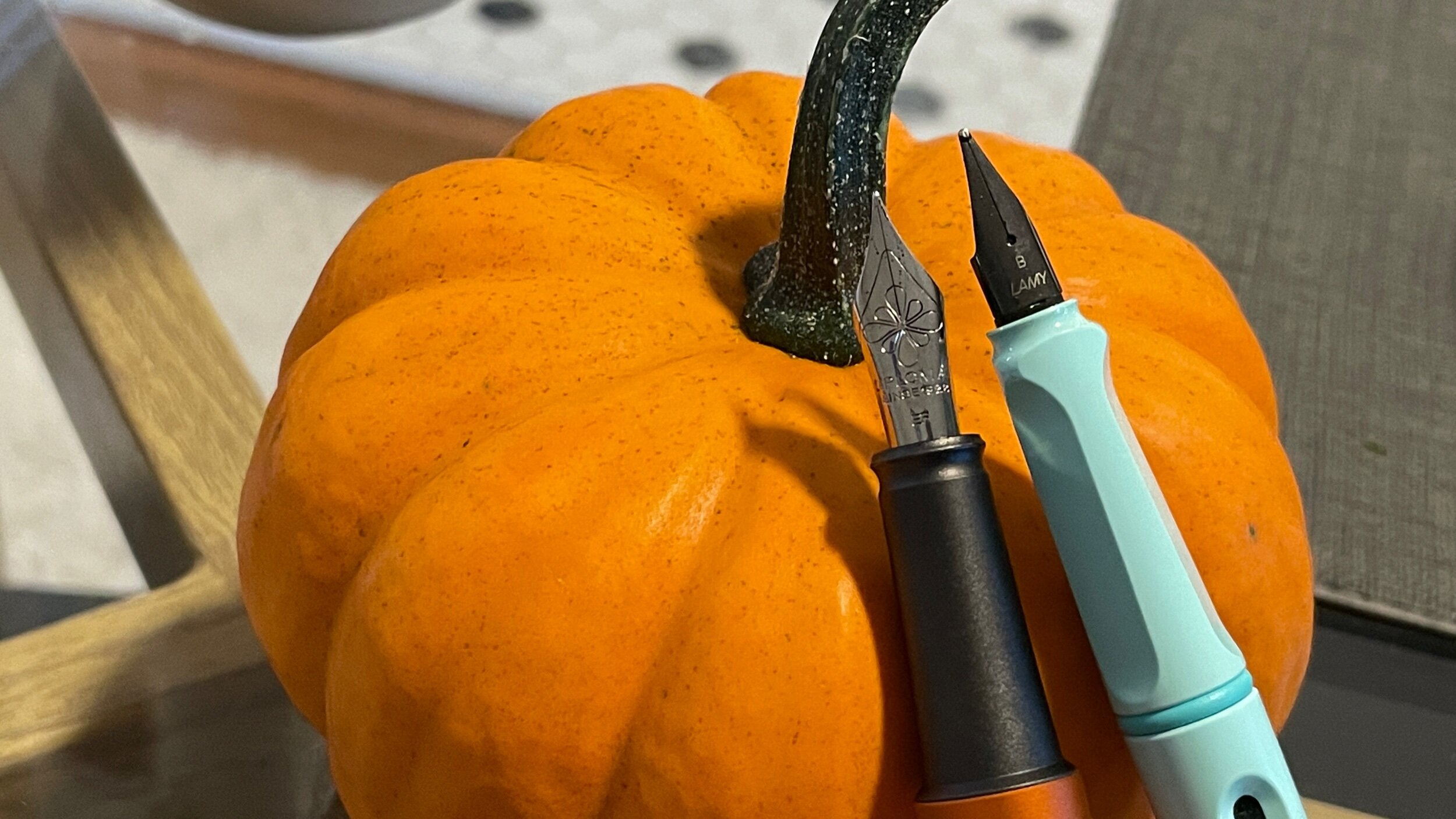Planning for planning: Hunting for a new planner system
I explored my 2022 planner options all September. The process is unique each year. Every year, I learn more about how I work best. And, frustratingly, how I work best changes over time, too. So: a moving target.
I settled on the Hobonichi Techo Day-Free in the petite A6 size. 2022, here I come.
Svelt.
Past lessons on how I work. Five years ago, I worked almost entirely from my desk. My primary job was research. Weekday evenings were spent teaching one or two classes on campus.
Few different work events to track. Each event took a single, large block of time. And these blocks were unlikely to change last-minute. Pen and paper made sense for tracking this workflow.
I found my way into the world of weekly spread planners. Knowing when projects needed to start and stop was more useful to me than reading details about each event in my planner.
The Jibun Techo’s vertical layout emphasized start and stop times. Frequent two or three hour long events gave me just enough space to fit (abbreviated) important details within the daily columns. And I could see the week’s work-pace in a glance.
Vertical lines are slimming
I kept my personal events in Apple’s Calendar app. Those events would change more frequently than work did. Electronic reminders helped me stay on schedule.
The years since that stationary stationery time have flip-flopped my obligations. Work events are frequent and change constantly. Sometimes only minutes before the start of a meeting or class. Life events are now mostly scheduled in advance.
Busy busy
I track my work events exclusively in Apple Calendar. Customized reminders. And easy drag-and-drop. I can keep my calendar updated quickly — without rewriting events after they change. Work is handled well digitally.
How do I track personal events reliably and enjoyably? Last year was an exploration in the world of the Hobonichi Weeks.
The weekly rows offer more horizontal space to mark details of events than the Jibun’s columns. And the full-length details page houses a running task list.
Solid. Yet flexible.
The change to one master weekly task list worked well. I didn’t miss a daily breakdown of personal tasks. The horizontal daily event spaces were not a fit for me. I found myself using the monthly pages more frequently as the year progressed.
So, we’re leaning into one weekly task list and a monthly event tracker. In a pocket size that can double as a pocket notebook.
The Hobonichi Day-Free is my next happy experiment. Looking forward to sharing my plans for this planner next week!
Happy planner season
This week’s Inked Tines update includes my most recent currently inked writing tools.
Toolset
Pens. This week has a clear standout combo. The Diplomat Aero (EF), inked with Gris Orage, is one of my best pairings of 2021. Easily in the top three. Shading: check. Noticeable shimmer: check. True EF line: check. No clogging: check. Fiddly cap for playing with during meetings: double check. Definitely a winning daily driver duo. Written empty.
Lamy Safari (B) — Empty. This B nib brings out the fun in some troublesome inks. Brane’s shimmer has clogged other feeds. This pair proved reliable for up to two pages. Long journaling sessions would see the feed dry out. Brane would turn dusty and light. Otherwise: great pairing. Lecture notes, lesson plans, meeting notes, limited pocket carry on Thursday and Friday.
Sailor Pro Gear (Z Architect) — Feed. Dual-purpose nib. Dusty, high-shading purple. Worked wonders for note taking during my students’ round table discussions on Mortenson’s (2007) Three Cups of Tea. Meeting notes, lesson plans, pocket carry.
Pilot CH 912 (SF) — Feed. Copper offers a smooth gradient of shading in this SF nib. Wrote perfectly. Black colorway suited serious meetings. Fine line proved excellent for meeting notes, marking papers, and some task management.
Monteverde Rodeo Drive (1.1) — 1/8. Surprised how much I enjoy Candy Marsala. Haloing, shading, and a dusty red. Wrote smoothly in the stub nib. I want to try Marsala in another pen now. Even though red is an atypical ink color for me. Pair worked well for discussion notes, meeting notes, and lesson plans.
Franklin-Christoph 45 (B SIG) — 2/5. Aonibi has a soft spot in my heart. The B SIG emphasizes all the best aspects of Aonibi. No wonder I love this pairing. A go-to pen for discussion notes during my research students’ round table seminar classes. I often swapped between the Monteverde and this pair. Discussion notes, lesson plans, meeting notes.
Visconti Homo Sapiens (EF) — ?? Developed into a planning and scratch notes combo. The dry pairing brought joy back into marking papers on absorbent school copy paper. Scratch notes, planning notes, meeting notes, lesson plans.
Notebooks. Work bujo. Musubi Cosmo Air Light 83 (A5). 21 new pages this week. The product of a second intense week of meetings alongside routine teaching duties. This notebook sits at page 80. At only one month in. Wowza.
I had a single blank page on 59 to start the week. My weeklies are a two-page spread, so I initially skipped page 59 and started my weekly task list on 60-61. The first meeting’s notes are homed on 59.
Perks of having an index with page numbers. Notes are easily threaded across multiple pages when needed.
Threading good. Smearing optional.
Eight pages of lesson plans follow. I rotated through each pen and ink combination as I did so. Tapped the Visconti, Lamy and Franklin-Christoph twice as I only had six pens paired with colored ink.
The remainder are meeting notes. I’ve taken to free-floating headers for meeting notes. The Musubi’s clever grid circumvents the need for a ruler or for counting squares.
Title, date, location, and folks present
Sweet, organized victory.
Journal. Taroko Breeze (A5). For the first week since starting this blog, I did not write in my journal. My work week proved grueling. My evenings turned into reading time and early bedtimes as a result.
Some weeks the writing comes easy. Others it’s elusive. This was an elusive week.
That said, I am one page off from halfway done with the Taroko notebook. Progress can sneak up on you.
Such tiny signatures
Written dry. Two pens coughed up this week. The Diplomat ran dry Friday morning. While scrawling out new tasks that came from the morning’s email review. The pair served admirably. I like this pairing enough that I’ve noted it in my ink database.
The Lamy Safari dried up one day earlier. Scratching out notes while designing an election poll for may students was the Lamy’s final straw. That pen and ink combo produced the strongest shading out of this week’s currently inked. Bonus.
Fallen writers
Both Japanese-made pens are nearing their ends: the Sailor Pro Gear and Pilot 912. Both are down to only the ink presently in their feeds. And for good reason.
Kanpai
The Pro Gear continued on as a pocket carry throughout the week. The reverse EF grind was my most-used writer.
The soft Pilot nib proved great for longer writing sessions. And the stoic colorway helped the combo fit right in during my most serious meeting notes. It ain’t boring if it’s useful. I think.
Newly inked. Shh. This section of the update is sleeping.
The collection
Incoming / new orders. No new orders this week.
I’m awaiting an update from the fine Farhney’s folks on the replacement for my Sailor 1911L Fresca. If the sale falls through, I’ll return the funds from that purchase to my stationery budget. Until then, “patience you must have.”
Outgoing / trades or sales. No movement here. My six outgoing remain in tray. As does my Parker Vacumatic.
Sending the Vacumatic out for repair is my priority for the coming week.
Beauty comes with age
Currently reading and listening
Fiction. I continued on into Wells’ Network Effect. I’m three chapters in. Murderbot is finding the nuances of living amongst humans. And Wells’ sarcastic tone offsets Bob Woodward’s dry, directness.
Preservation is a lovely escape as I wind down at the ends of workdays.
Nonfiction. Historians Andrew George and Gerda Lerner occupied my reading time Monday, Tuesday, and Wednesday.
George’s translation of the Epic of Gilgamesh is a classic way to introduce young folk to Mesopotamian teaching stories. All of the repetition in the story hits you full force. Excited to start this text with my students next week.
And Lerner unpacks the patriarchal frameworks that teaching stories like Gilgamesh are built on. Practicing looking for her concepts in Gilgamesh offers excellent training. Plus, Ishtar stories are fun — if nerdy — reading.
The remainder of my nonfiction reading was Bob Woodward’s Peril. I made it to chapter 51. With a noticeable absence of note taking. You know, leisure reading.
Music. Dope Lemon dropped a new single last week, which I discovered on Tuesday. They sit inside a mellow, bohemian drawl. Great writing music. A word of warning: the content of Dope Lemon’s songs is often unfriendly for kids’ ears.
But they remind me of my honeymoon. So Dope Lemon played on my commutes every day but Monday.














